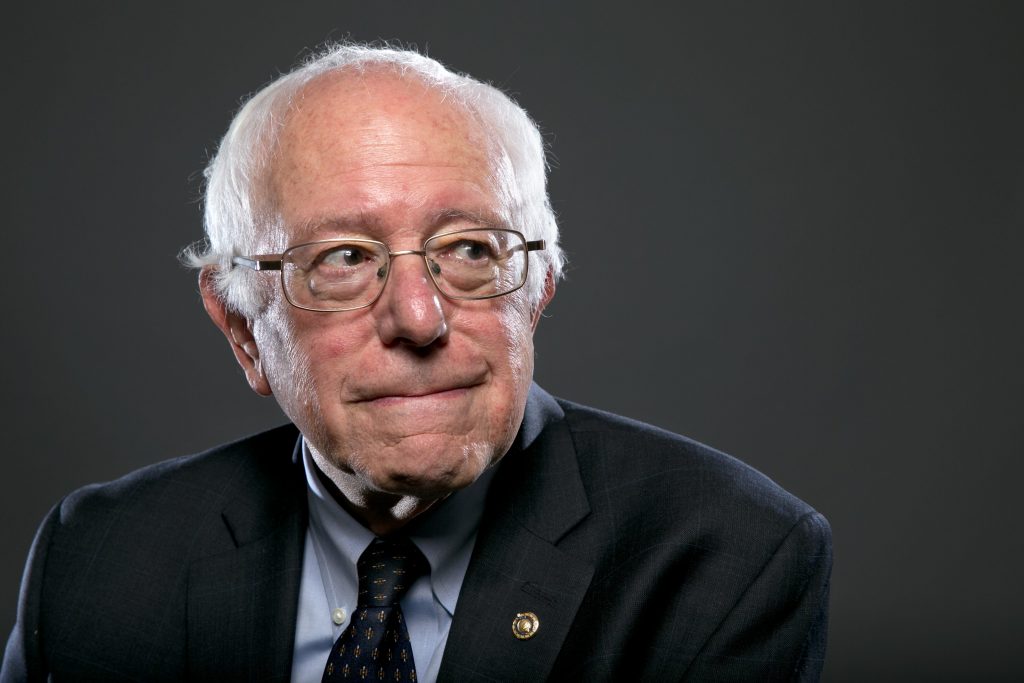
Can we please stop talking about Bernie Sanders’ policy suggestions as if he were by some kind of unhinged fantasist? Sanders recently introduced to the Senate a bill that would expand Medicare to include citizens under 65 years of age — and you’d have thought he proposed changing water into wine. Hey, obstinate right-wingers: What Bernie has proposed is more or less the working model for the existing healthcare systems now operating in every industrialized nation on earth — that is, every one but the United States. What’s more, as the facts relay (in spite of reflexive carping from actual fantasists, those of the Randian variety), nearly every one of those socialized systems delivers health care for less cost per citizen than the system we Americans currently deploy (the ACA) and the largely private one it replaced.
Sanders’ call for “free public college tuition for all” during the 2016 campaign also elicited no small amount of tittering from observers on both the right and left — despite the fact that, as recently as the late 1970s, the U.S. itself offered public higher education for close to nothing. Let’s first examine what Bernie actually said: free PUBLIC college tuition (no one, including Sanders, is suggesting we subsidize anyone’s matriculation at private institutions). Second, we already offer free primary and secondary education as a matter of course; in terms of prepping workers and citizens for lifelong utility (to the culture, to the economy) why should college be any different? Last, check the stats: The average annual in-state public university room, board and tuition in 1977 — $2,067. That’s not “free”, but even when inflation is accounted for, that is highly affordable (the average price of a new car in 1977 was $5,813). More to the point, that was a four-year education debt load of some $8,200, a sum any college-educated student could expect to chip away at quite substantially — over their summers! It’s certainly nothing like the crushing debt load graduates encounter today. Why the discrepancy? Because we subsidized (read: socialized the cost of) public colleges to a far greater extent not just in the 1970s but throughout the ‘50s and ‘60s. This was not some government decision, mind you; we THE PEOPLE decided it was worthwhile to make higher education attainable and affordable. Starting with the Reagan administration, fewer and fewer people saw the value in socializing the cost of higher education. Bit by bit, that socialization was dismantled and/or reduced, to the point where today the average annual room, board and tuition cost for the public, in-state college student is $20,090.
I’ll be honest: Maybe it’s my somewhat watered down but still vaguely Mediterranean complexion, but I never felt the Bern to any great extent. At 76, he was and remains too old to have been a viable two-term president. He fixates on certain issues to the exclusion of others — which is what senators do, a role that suits him. I’m not sure he plays particularly well with others, a trait we can see the value of today. He looks and sounds way too much like Larry David. And his carping at the Democratic National Committee seemed to me churlish and misplaced. [Of course the DNC favored HRC; she was a Democrat after all and Bernie wasn’t. Lest we forget, political parties in this country are private organizations. I don’t see why the DNC is obliged allow anyone who isn’t registered with the party to seek that party’s nomination. If an independent candidate like Bernie is allowed to compete for delegates, he should not be surprised when establishment Dems bend the rules to favor one of their own.]
But I’ll say this, god bless the man. For the entirety of my life — for the entire post-WWII era — the mere inkling of anything nominally socialist here in America was met with howls of derision and irrational fear-mongering (thanks, Russia). The mere existence of Bernie (and his policy proposals) have gone a long way toward demystifying the term and curing our nation of this impractical, hypocritical phobia — because we already socialize all sorts of costs and risks in this country: schools, highway construction/upkeep, libraries, congressional and veterans’ health care, Social Security, all branches of the military, police and fire departments, the court system, the Centers for Disease Control, public transportation and yes, even PBS. Socialized medicine and low-cost, subsidized public higher education are not fantasies. Variations on these specific themes are functioning to great effect in the real world, all around the world, even here in America once upon a time. Which is more than we can say for trickle-down economics and its fanciful enabler, the Laffer Curve.